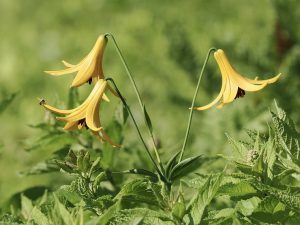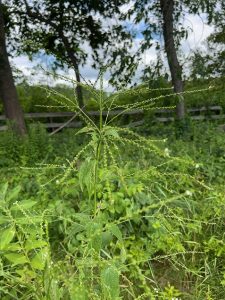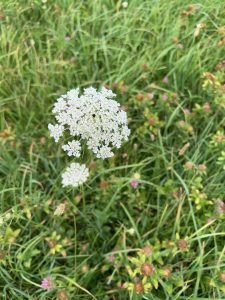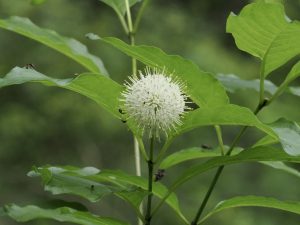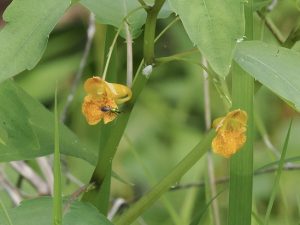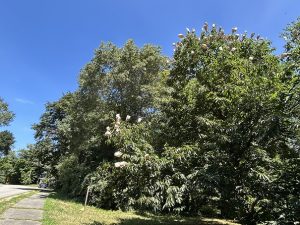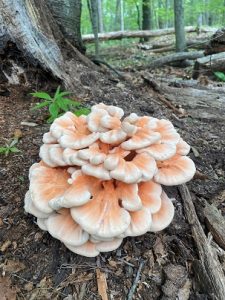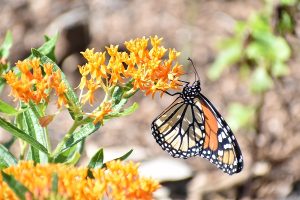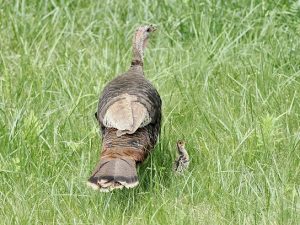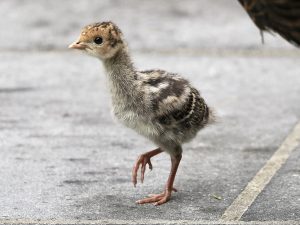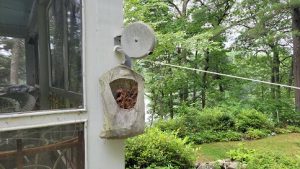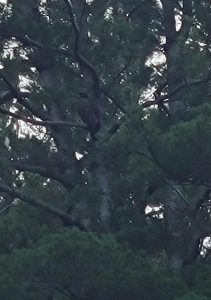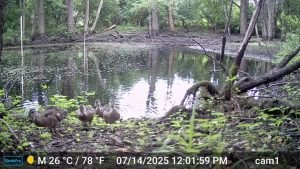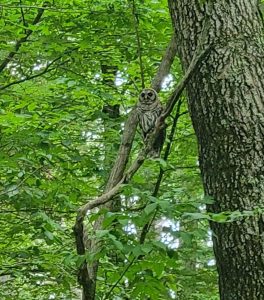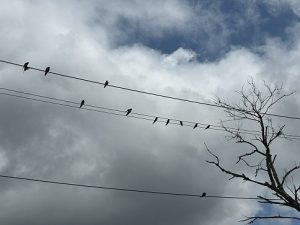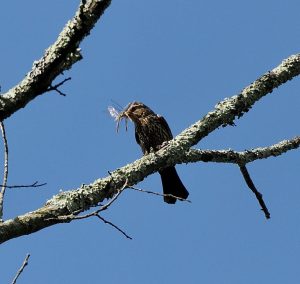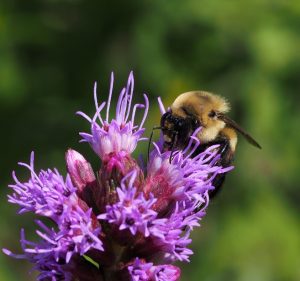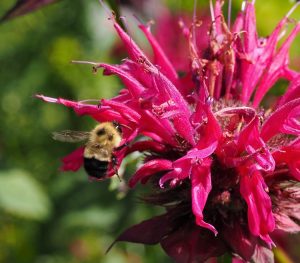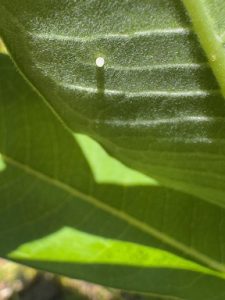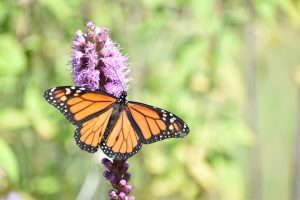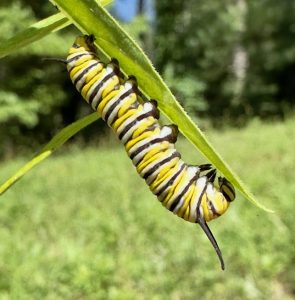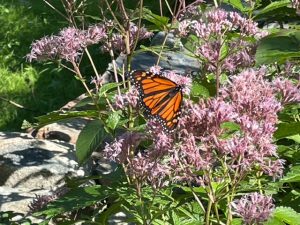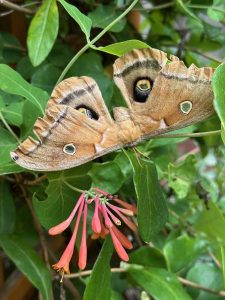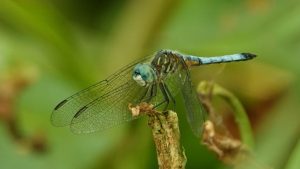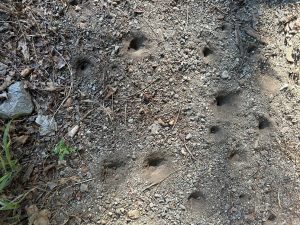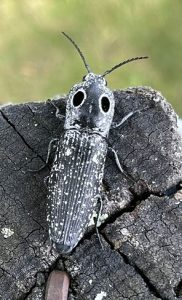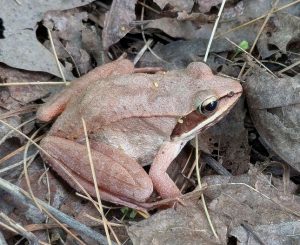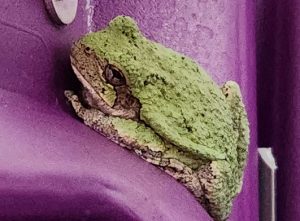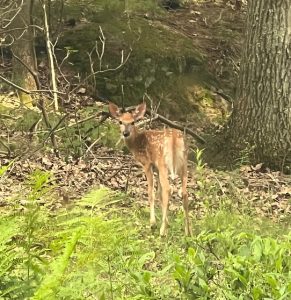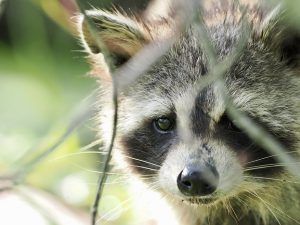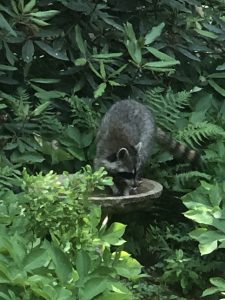Written by Gwyn Loud for the Lincoln Land Conservation Trust. She welcomes your sightings and questions at 781-259-8690 or gwynloud555@gmail.com.
“Dry and hot” describes July. We have had three heat waves so far, with temperatures in the 90s, and accompanying high humidity, making sleep elusive without air conditioning. The mass.gov drought map says that Massachusetts, except for Cape Cod, is not experiencing drought, although the soil in my garden is dry and plants are drooping without rain. A brief deluge in a thunderstorm on July 20 brought .1 inch and helped a bit. It turns out that precipitation is just one of several factors in declaring a drought. Click the link below to read more about how drought is officially determined.
The landscape is lush with green, and many flowers are blooming, both in the wild and gardens. Poison ivy is thriving too, growing more vigorously and with larger leaves, thanks to the warming climate. Earlier in the month it was a treat to come across beautiful Canada lilies flowering in a field with milkweed blooming nearby. Red clover, white clover, Joe-Pye weed, and wild carrot can also be found in open areas, and some early goldenrod is starting to bloom. Spreading dogbane, white vervain, and daisy fleabane are other flowers to be found in Browning Field. In damp areas you may come across purple loosestrife, sweet pepperbush, or buttonbush. Jewelweed (aka touch-me-not), with its tubular flowers, is a favorite of hummingbirds. In the woods I found striped wintergreen and ghost pipes. Ghost pipes look like they might be a mushroom but, no, they are woodland flowers, although an unusual one. They do not contain chlorophyll, the green substance which allows most plants to turn sunshine into food through photosynthesis. Instead, ghost pipes attach themselves to mycorrhizal fungi attached to the roots of trees such as oaks and beeches. The fungi, which help the process of decay in the forest floor, provide nutrients to the trees and also to the ghost pipes.
If you drive along Rt. 117, on the north side, not far from the Weston/Lincoln town line, you may notice trees with bags over growing tips of branches. What is that all about? For many years the American Chestnut Foundation (TACF) has tended a plot of LLCT land there to work on developing American chestnut trees which are resistant to the blight, which killed the once-common tree starting in 1908. The bags are put over the female flowers to prevent random airborne pollen from fertilizing the flowers. TCAF also operates a more recently established nursery on a sloping section of Flint Fields. To read more about the complex process of developing blight-resistant American chestnut trees, see link below.
This feels like family month for birds, both altricial and precocial species. The former are our familiar songbirds, with babies born with eyes closed and remaining in the nest while being fed by parents for a couple of weeks as feathers develop. After a lot of parental care they are able to fledge and leave the nest. I noticed that the adult bluebirds in one of my boxes led their new fledglings high up in the black locust trees, presumably safe from predators. The precocial birds include species such as wild turkeys, killdeer, ducks, and geese; these are primarily ground nesters, and the babies are born with eyes open and down feathers. They can walk, hop, swim and hunt for food very soon after hatching, although they will stay with at least one parent for protection and guidance in finding food. It is a precarious time for the young, and many do not survive. Notable nestings reported to me include bald eagles along Fairhaven Bay, where they have nested before, and common loons, with at least one chick, on the island on Flint’s Pond. This is the second year loons have nested there. Norm Levey has been monitoring, and reports that a team from Biodiversty Research Institute will soon color-band the adults after dark (the chicks are too small). Ron McAdow, photographed Carolina wrens nesting in a clothespin bag. He said he had to buy more clothespins (bravo for drying clothes on the line!). A number of our familiar birds are busy still raising second broods, such as the chattering house wrens in one of my boxes. Will Leona, Conservation Ranger, wrote, “Last week around 7:30am I heard three juvenile barred owls calling (screeching and hissing) right by the first pond at Mt. Misery. I followed the sound and found two of the three less than 50 feet off the main trail.”
Notable bird sightings in recent weeks from Drumlin Farm include many indigo buntings, green herons, Northern rough-winged swallows, a brown thrasher, a veery, and several species of warblers. I have been delighted to hear wood thrushes singing in many parts of town, and a field sparrow singing over two days near Pierce House.
I always watch for the barn swallows, including many young, sitting on the wires along Conant Rd. near the intersection with Weston Road, My highest count so far this year is 16, many fewer than the regular 33-35 a few years ago. We know that aerial insectivores, such as swallows, are in decline because the insects they eat are in decline, negatively affecting numerous food chains. Sometime over the next month the swallows will vanish, migrating to Central and South America for the winter. Additional summer residents will also start their fall migrations. Bobolinks, for example, will soon embark on a journey of over six thousand miles, also to South America.
Insects are evident all around us, from spectacular butterflies, to deer flies, many species of bees, and cicadas, which have recently started their buzzy songs. Soon we can expect to hear the katydid saying its name- “KatyDID, KatyDID”. Norm Levey has photographed a variety of bumble bees, including some uncommon ones such as Bombus vegans and Bombus fervidus. He also spotted a hummingbird clearwing, a familiar diurnal moth which can be mistaken for a hummingbird, due to its shape and hovering behavior as it visits flowers. Marcia Gnagey found a spectacular black-swallowtail caterpillar on a dill plant and wrote, “When I started to move him from an almost denuded plant to another dill plant he suddenly everted his osmeterium gland. Even though the osmeterium is a single gland, the Y shaped eversible gland looks like two horns when everted because there are two lobes of the gland. The osmeterium is both a chemical and visual defense mechanism to deter predators— especially ants, spiders and small birds—and me too! It emits volatile chemicals, including terpenes and acids, that mimic “bad” smells like rotting citrus.” Marcia made another spectacular discovery, finding a Polyphemus moth (dead, alas) at the base of a honeysuckle bush. Her photograph shows that the inner “eyes” on the wing are transparent, revealing the foliage colors beneath the wing. Observers around town have observed modest numbers of adult monarch butterflies, as well as some caterpillars and eggs, laid on both swamp and common milkweed. The report from the World Wildlife Fund of the population of overwintering monarchs in 2025 in the mountains of Mexico was very encouraging in terms of numbers. We can all help by planting milkweed or letting common milkweed grow in wild areas.
This is the season to watch for dragonflies and damselflies. As written in the newsletter from the Harris Center of Conservation Education “Dragonflies are considered the most successful predators in the animal kingdom, with hunting success rates between 90 and 97% — thanks to their exceptional vision, agile flight, and precise hunting strategies. If you’re near a pond or wetland this summer, watch the grasses closely, as one of these dazzling predators might just be watching you!”
An insect which is common but very hard to see is the antlion (aka doodlebug), a member of the Neuroptera family. I see regular evidence of them in the warm seasons in the little conical pits they make in the sandy soil under the overhang of my stable. The larva of the insect lies in wait at the bottom of the mini-crater, and when an ant slips down the slope, the larva reaches up and grabs it for a meal. The larva pupates and turns into a weak-flying adult which only lives about two weeks, long enough to reproduce. A research article showing that insects can respond to sounds made by plants, beyond human hearing range, arrived in my “Nice News” email this week. Very intriguing!
Our local frogs and toads of different ages are often seen this time of year, both by ponds but perhaps hopping across your lawn. Toads and toadlets often turn up in my garden, and you might find a gray treefrog attached to a window with the sticky pads on its feet. Green frogs give a banjo-like “glunk” sound as they leap into a pond, and bullfrogs sing their deep “jug-a-rum” songs through the night.
This is family month too in the world of mammals. Coyotes have been howling in my neighborhood and I’m guessing it is often the young pups communicating with each other and adults. Carol Roede’s trail cam has captured photos of mink and raccoon families and Will Leona says beavers are “everywhere” and he thinks a new lodge is being constructed along the Sudbury River near the Canoe Landing. Deer and rabbits are numerous at Drumlin Farm, and, no doubt, elsewhere. I am happy to observe bats, probably little brown bats and big brown bats, swooping and fluttering in circles overhead about half an hour after sunset, as they capture insects on the wing.
Looking to the night skies, the Perseid meteor showers are always a feature in August. This year the bright waning gibbous moon may make it harder to see them when they peak pre-dawn on August 11 and 12. It will be possible to see meteors starting in late July; for more information check link below. I hope readers will relish the wonders of nature in August, as summer winds down and fall approaches. This column will resume in September.
Links
Videos


